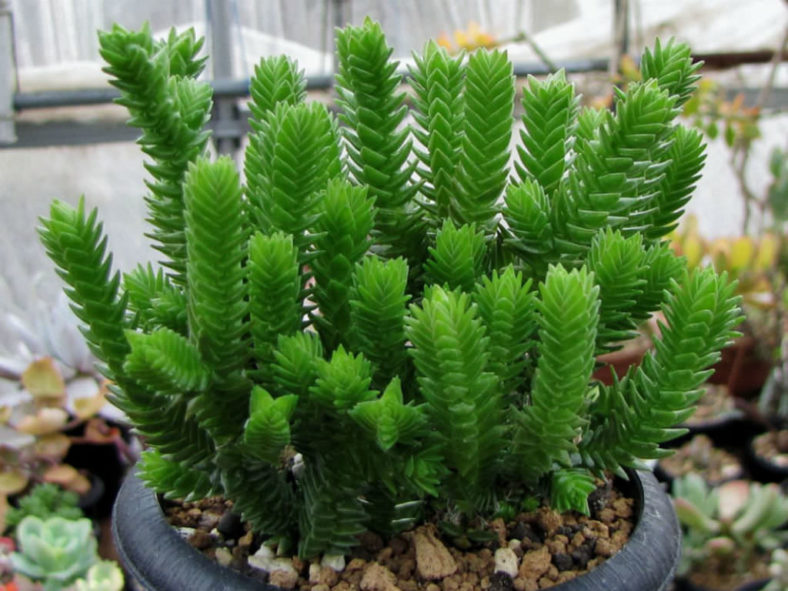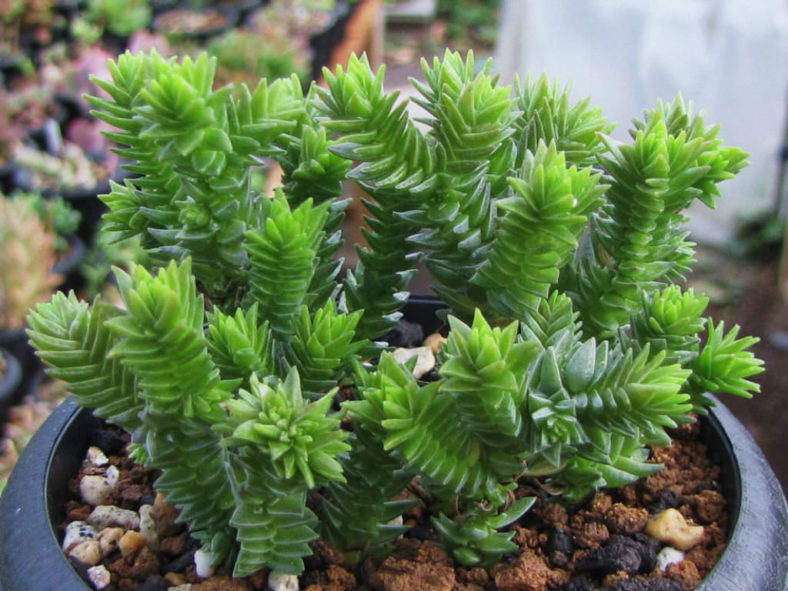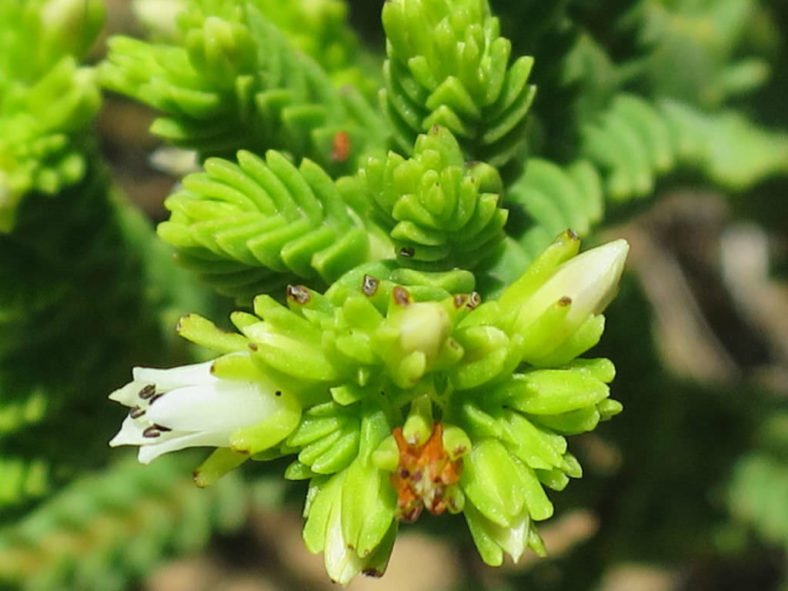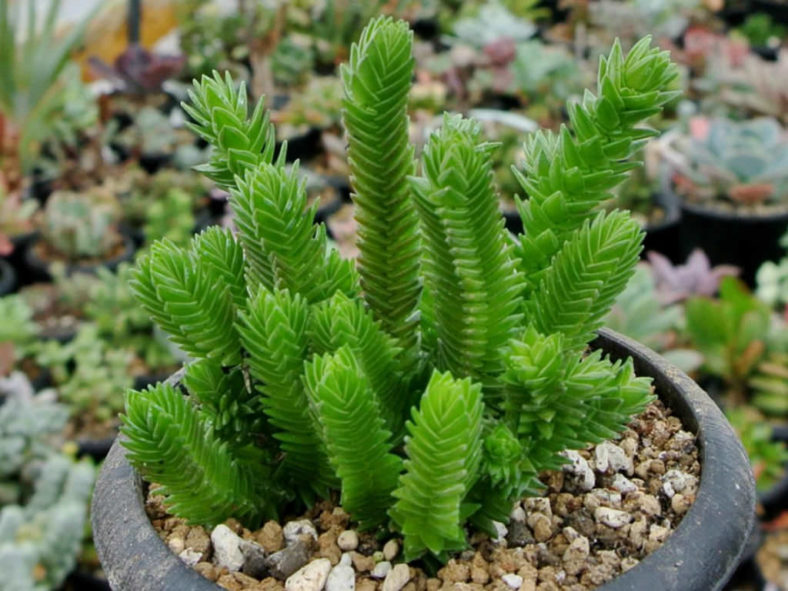Scientific Name
Crassula ericoides Haw.
Common Name(s)
Large Whipcord
Synonym(s)
Crassula ericoides subsp. ericoides, Creusa ericoides, Sedum ericodes
Scientific Classification
Family: Crassulaceae
Subfamily: Crassuloideae
Genus: Crassula
Etymology
The specific epithet "ericoides" (pronounced "er-ik-OY-dees") means "resembling Erica" and refers to the likeness of this species to the members of the genus Erica.
Origin
Crassula ericoides is native to South Africa. It grows on dry, rocky slopes from Cape Hangklip in the Western Cape to KwaZulu-Natal.
Description
Crassula ericoides is a small, sparingly to moderately branched succulent shrub with erect, rarely decumbent, or prostrate branches with green, lance-shaped or ovoid leaves. It can grow up to 10 inches (25 cm) tall, often highly branched towards the apex. The older branches have brown bark peeling in horizontal strips. The leaves can measure up to 0.2 inches (0.5 cm) in length and 0.1 inches 0.2 cm) in width. The old leaves are usually deciduous.
The flowers are tubular, white to cream-colored, and appear in clusters at the tip of the branches in winter.

Subspecies of Crassula ericoides
- Crassula ericoides subsp. ericoides
- Crassula ericoides subsp. tortuosa
How to Grow and Care for Crassula ericoides
Hardiness: USDA hardiness zones 9b to 11b: from 25°F (-3.9°C) to 50°F (10°C).
Crassulas are easy to grow but susceptible to mealybugs and fungal diseases. Overwatering is sure to be fatal, as with all succulents, so err on the side of being too dry rather than too wet. Never let your plant sit in water. If you water from beneath by allowing the plant to sit in a saucer, pour off any excess water after a few minutes.
These succulents are generally started by division, offsets, or leaf cuttings. Crassulas can be easily propagated from a single leaf. Sprout leaves by placing them into a potting mix for succulents, then cover the dish until they sprout.
Repot as needed, preferably during the warm season. To repot your Crassula, ensure the soil is dry before repotting, then gently remove the pot. Knock away the old soil from the roots, removing any rotted or dead roots. Treat any cuts with a fungicide. Place the plant in its new pot and backfill it with potting soil, spreading the roots as you repot. Leave the plant dry for a week or so, then begin to water lightly to reduce the risk of root rot.
See more at How to Grow and Care for Crassula.
Links
- Back to genus Crassula
- Succupedia: Browse succulents by Scientific Name, Common Name, Genus, Family, USDA Hardiness Zone, Origin, or cacti by Genus
Photo Gallery
Click on a photo to see a larger version.


